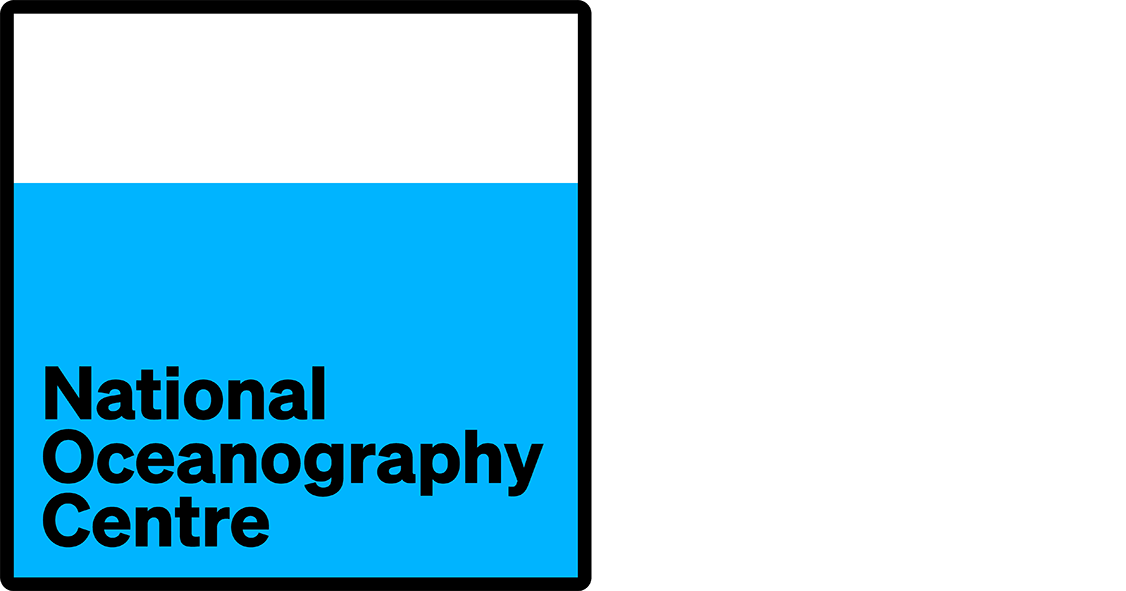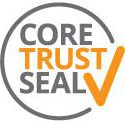Metadata Report for BODC Series Reference Number 1621205
Metadata Summary
Problem Reports
Data Access Policy
Narrative Documents
Project Information
Data Activity or Cruise Information
Fixed Station Information
BODC Quality Flags
SeaDataNet Quality Flags
Metadata Summary
Data Description |
|||||||||||||||||||||||||||||||||||||||||||||||||||||||||
|
|||||||||||||||||||||||||||||||||||||||||||||||||||||||||
Data Identifiers |
|||||||||||||||||||||||||||||||||||||||||||||||||||||||||
|
|||||||||||||||||||||||||||||||||||||||||||||||||||||||||
Time Co-ordinates(UT) |
|||||||||||||||||||||||||||||||||||||||||||||||||||||||||
|
|||||||||||||||||||||||||||||||||||||||||||||||||||||||||
Spatial Co-ordinates | |||||||||||||||||||||||||||||||||||||||||||||||||||||||||
|
|||||||||||||||||||||||||||||||||||||||||||||||||||||||||
Parameters |
|||||||||||||||||||||||||||||||||||||||||||||||||||||||||
|
|||||||||||||||||||||||||||||||||||||||||||||||||||||||||
Definition of BOTTFLAG | |||||||||||||||||||||||||||||||||||||||||||||||||||||||||
| BOTTFLAG | Definition |
|---|---|
| 0 | The sampling event occurred without any incident being reported to BODC. |
| 1 | The filter in an in-situ sampling pump physically ruptured during sample resulting in an unquantifiable loss of sampled material. |
| 2 | Analytical evidence (e.g. surface water salinity measured on a sample collected at depth) indicates that the water sample has been contaminated by water from depths other than the depths of sampling. |
| 3 | The feedback indicator on the deck unit reported that the bottle closure command had failed. General Oceanics deck units used on NERC vessels in the 80s and 90s were renowned for reporting misfires when the bottle had been closed. This flag is also suitable for when a trigger command is mistakenly sent to a bottle that has previously been fired. |
| 4 | During the sampling deployment the bottle was fired in an order other than incrementing rosette position. Indicative of the potential for errors in the assignment of bottle firing depth, especially with General Oceanics rosettes. |
| 5 | Water was reported to be escaping from the bottle as the rosette was being recovered. |
| 6 | The bottle seals were observed to be incorrectly seated and the bottle was only part full of water on recovery. |
| 7 | Either the bottle was found to contain no sample on recovery or there was no bottle fitted to the rosette position fired (but SBE35 record may exist). |
| 8 | There is reason to doubt the accuracy of the sampling depth associated with the sample. |
| 9 | The bottle air vent had not been closed prior to deployment giving rise to a risk of sample contamination through leakage. |
Definition of Rank |
|
|
Problem Reports
No Problem Report Found in the Database
Data Access Policy
Open Data
These data have no specific confidentiality restrictions for users. However, users must acknowledge data sources as it is not ethical to publish data without proper attribution. Any publication or other output resulting from usage of the data should include an acknowledgment.
If the Information Provider does not provide a specific attribution statement, or if you are using Information from several Information Providers and multiple attributions are not practical in your product or application, you may consider using the following:
"Contains public sector information licensed under the Open Government Licence v1.0."
Narrative Documents
Niskin Bottle
The Niskin bottle is a device used by oceanographers to collect subsurface seawater samples. It is a plastic bottle with caps and rubber seals at each end and is deployed with the caps held open, allowing free-flushing of the bottle as it moves through the water column.
Standard Niskin
The standard version of the bottle includes a plastic-coated metal spring or elastic cord running through the interior of the bottle that joins the two caps, and the caps are held open against the spring by plastic lanyards. When the bottle reaches the desired depth the lanyards are released by a pressure-actuated switch, command signal or messenger weight and the caps are forced shut and sealed, trapping the seawater sample.
Lever Action Niskin
The Lever Action Niskin Bottle differs from the standard version, in that the caps are held open during deployment by externally mounted stainless steel springs rather than an internal spring or cord. Lever Action Niskins are recommended for applications where a completely clear sample chamber is critical or for use in deep cold water.
Clean Sampling
A modified version of the standard Niskin bottle has been developed for clean sampling. This is teflon-coated and uses a latex cord to close the caps rather than a metal spring. The clean version of the Levered Action Niskin bottle is also teflon-coated and uses epoxy covered springs in place of the stainless steel springs. These bottles are specifically designed to minimise metal contamination when sampling trace metals.
Deployment
Bottles may be deployed singly clamped to a wire or in groups of up to 48 on a rosette. Standard bottles and Lever Action bottles have a capacity between 1.7 and 30 L. Reversing thermometers may be attached to a spring-loaded disk that rotates through 180° on bottle closure.
D340A Discrete Dissolved Inorganic Nutrients Sampling Document
Originator's Protocol for Data Acquisition and Analysis
Water samples were drawn from the CTD rosette bottles deployed during the cruise with the majority of the sampling effort concentrated in areas of the water column corresponding with changes in water mass and changes in algal mass.
Samples were collected in 250 ml acid cleaned polythene bottles directly from CTD spigots without the use of a tube. Samples were stored in a fridge prior to analysis. The analysis was carried out within 24 hours of sample collection with a Lachat Quick Chem 8500 flow injection autoanalyser using the manufacturer's recommended methods. Standards were prepared in deionised water and samples were run in a carrier stream of deionised water.
Salt corrections were performed by running a small number of Low Nutrient Sea Water samples during each sample batch run with the mean result being subtracted from sample results.
References Cited
Sherwin T. A. et al., 2009. Cruise D340A Reykjavic to Dunstaffnage via Rockall and the Wyville Thomson Ridge. Internal Report No 264. Scottish Association for Marine Science.
Available - Cruise D430A Internal Report
BODC Data Processing Procedures
The nutrient data were supplied to BODC in Microsoft Excel format. Values were extracted from these and saved in ASCII format prior to being loaded into BODC's ocean database under the ORACLE Relational Database Management System. Data that were considered unrealistic were flagged suspect.
SAMS nitrate data quality warning
SAMS have notified BODC of a problem in the analytical procedure adopted for nitrate analysis on this cruise. The problem relates to the technique used to prepare the analytical standards, which results in nitrate (and consequently nitrite) values which are typically 10-15 % higher than they should be. Absolute data values should therefore be used with extreme caution.
Content of data series
| Originator's Parameter | Originator's Unit | Description | BODC's Parameter Code | BODC's Unit | Comments |
|---|---|---|---|---|---|
| Ammonium | µM | Concentration of ammonium in the water column by colorimetric autoanalysis (unfiltered) | AMONAATX | µM | n/a |
| Standard deviation of ammonium | µM | Concentration standard deviation of ammonium in the water column by colorimetric autoanalysis (unfiltered) | SDAMAATX | µM | n/a |
| Phosphate | µM | Concentration of phosphate in the water column by colorimetric autoanalysis (unfiltered) | PHOSAATX | µM | n/a |
| Standard deviation of phosphate | µM | Concentration standard deviation of phosphate in the water column by colorimetric autoanalysis (unfiltered) | SDPHAATX | µM | n/a |
| Silicate | µM | Concentration of silicate in the water column by colorimetric autoanalysis (unfiltered) | SLCAAATX | µM | n/a |
| Standard deviation of silicate | µM | Concentration standard deviation of silicate in the water column by colorimetric autoanalysis (unfiltered) | SLSDAATX | µM | n/a |
| Nitrate and nitrite | µM | Concentration of nitrate and nitrite in the water column by colorimetric autoanalysis (unfiltered) | NTRZAATX | µM | n/a |
| Standard deviation of nitrate and nitrite | µM | Concentration standard deviation of nitrate and nitrite in the water column by colorimetric autoanalysis (unfiltered) | SDNZAATX | µM | n/a |
Data Quality Report
A number of the values in the channels AMONAATX and SDAMAATX have negative values which have subsequently been flagged.
Project Information
Oceans 2025 Theme 10, Sustained Observation Activity 4: The Extended Ellett Line
The Ellett Line (begun in 1975 and since 1996 the Extended Ellett Line from Scotland to Iceland) crosses important north Atlantic Meridional Overturning Circulation (MOC) components and thus provides an additional contribution to understanding the north Atlantic response to climate change. Sustained Observation Activity (SO) 4 will repeat this section annually collecting a wide variety of physical and biogeochemical measurements, and will, to enhance the time variable component, make use of Argo floats and gliders. SO 4 will be implemented by physical, biological and chemical scientists at the National Oceanography Centre, Southampton (NOCS) and the Scottish Association for Marine Science (SAMS).
SO 4 formally contributes to the Department for Environment, Food and Rural Affairs (DEFRA)-funded Marine Environmental Change Network (MECN). Established in 2002 to coordinate and promote the collection and utilisation of marine time-series and long-term data sets, the goal of the network is to use long-term marine environmental data from around the British Isles and Ireland to separate natural fluctuations from global, regional and local anthropogenic impacts.
The specific deliverables for SO 4 are:
- A time series of the evolution of the hydrography of the northeast Atlantic, together with a more formal understanding of the causes of any changes observed
- An archived data set available to the international community via the British Oceanographic Data Centre (BODC)
- A platform for further scientific research
More detailed information on this Work Package is available at pages 15 - 16 of the official Oceans 2025 Theme 10 document: Oceans 2025 Theme 10
Weblink: http://www.oceans2025.org/
Data Activity or Cruise Information
Data Activity
| Start Date (yyyy-mm-dd) | 2009-06-20 |
| End Date (yyyy-mm-dd) | 2009-06-20 |
| Organization Undertaking Activity | Scottish Association for Marine Science |
| Country of Organization | United Kingdom |
| Originator's Data Activity Identifier | D340A_CTD_C045 |
| Platform Category | lowered unmanned submersible |
BODC Sample Metadata Report for D340A_CTD_C045
| Sample reference number | Nominal collection volume(l) | Bottle rosette position | Bottle firing sequence number | Minimum pressure sampled (dbar) | Maximum pressure sampled (dbar) | Depth of sampling point (m) | Bottle type | Sample quality flag | Bottle reference | Comments |
|---|---|---|---|---|---|---|---|---|---|---|
| 222042 | 1 | 1 | 117.40 | 117.70 | 116.40 | Niskin bottle | No problem reported | |||
| 222043 | 2 | 2 | 117.60 | 117.80 | 116.60 | Niskin bottle | No problem reported | |||
| 222044 | 3 | 3 | 117.80 | 118.20 | 116.90 | Niskin bottle | No problem reported | |||
| 222045 | 4 | 4 | 101.80 | 102.50 | 101.20 | Niskin bottle | No problem reported | |||
| 222046 | 5 | 5 | 102.20 | 102.40 | 101.30 | Niskin bottle | No problem reported | |||
| 222047 | 6 | 6 | 51.70 | 51.80 | 51.30 | Niskin bottle | No problem reported | |||
| 222048 | 7 | 7 | 51.90 | 52.10 | 51.50 | Niskin bottle | No problem reported | |||
| 222049 | 8 | 8 | 23.20 | 23.50 | 23.10 | Niskin bottle | No problem reported | |||
| 222050 | 9 | 9 | 23.20 | 23.50 | 23.10 | Niskin bottle | No problem reported | |||
| 222051 | 10 | 10 | 7.90 | 8.30 | 8.00 | Niskin bottle | No problem reported | |||
| 222052 | 11 | 11 | 7.70 | 8.10 | 7.80 | Niskin bottle | No problem reported |
Please note:the supplied parameters may not have been sampled from all the bottle firings described in the table above. Cross-match the Sample Reference Number above against the SAMPRFNM value in the data file to identify the relevant metadata.
Cruise
| Cruise Name | D340A |
| Departure Date | 2009-06-10 |
| Arrival Date | 2009-06-25 |
| Principal Scientist(s) | Toby J Sherwin (Scottish Association for Marine Science) |
| Ship | RRS Discovery |
Complete Cruise Metadata Report is available here
Fixed Station Information
No Fixed Station Information held for the Series
BODC Quality Control Flags
The following single character qualifying flags may be associated with one or more individual parameters with a data cycle:
| Flag | Description |
|---|---|
| Blank | Unqualified |
| < | Below detection limit |
| > | In excess of quoted value |
| A | Taxonomic flag for affinis (aff.) |
| B | Beginning of CTD Down/Up Cast |
| C | Taxonomic flag for confer (cf.) |
| D | Thermometric depth |
| E | End of CTD Down/Up Cast |
| G | Non-taxonomic biological characteristic uncertainty |
| H | Extrapolated value |
| I | Taxonomic flag for single species (sp.) |
| K | Improbable value - unknown quality control source |
| L | Improbable value - originator's quality control |
| M | Improbable value - BODC quality control |
| N | Null value |
| O | Improbable value - user quality control |
| P | Trace/calm |
| Q | Indeterminate |
| R | Replacement value |
| S | Estimated value |
| T | Interpolated value |
| U | Uncalibrated |
| W | Control value |
| X | Excessive difference |
SeaDataNet Quality Control Flags
The following single character qualifying flags may be associated with one or more individual parameters with a data cycle:
| Flag | Description |
|---|---|
| 0 | no quality control |
| 1 | good value |
| 2 | probably good value |
| 3 | probably bad value |
| 4 | bad value |
| 5 | changed value |
| 6 | value below detection |
| 7 | value in excess |
| 8 | interpolated value |
| 9 | missing value |
| A | value phenomenon uncertain |
| B | nominal value |
| Q | value below limit of quantification |


